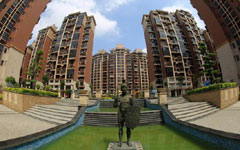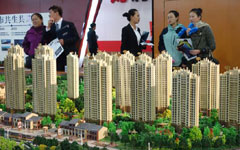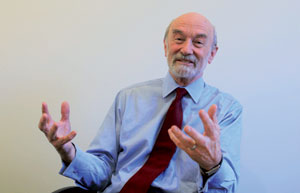Instead of heating up, property sales cool down
By Hu Yuanyuan (China Daily) Updated: 2014-04-23 07:06In Hangzhou, the provincial capital of East China's Zhejiang province, property developers are struggling for buyers. Some developers' sales staff even pretended to be potential clients at a rival's meeting and then tried to persuade real buyers to buy their project.
And in Yuyao, a city in Zhejiang, one developer has been so eager to cash in, he is offering discounts of 40 percent.
Zhang Dawei, chief analyst at property agent Centaline Group's Beijing branch, said the peak of the property market was probably during the last quarter of 2013.
|
 |
|
 |
The only residential sector not affected so far is luxury homes.
According to international real estate consultancy firm Jones Lang LaSalle, capital values for luxury apartments and villas in Beijing rose by 6.6 percent and 11.9 percent quarter-on-quarter, respectively, in the first quarter of 2014.
Despite an increase in inventory and lower transaction volumes, the market remains undersupplied, further driving capital value growth. Moreover, newly launched projects have achieved higher-than-market prices, which has further contributed to the rise, according to JLL research.
"It took one of our clients only five days to decide to purchase a 23 million yuan apartment in our luxury projects along the eastern Third Ring Road," said a sales manager with Hongkun Real Estate Co Ltd surnamed Chen.
Chen said the extremely limited supply of high-end projects in that area was the key reason for the client's quick decision, despite the fact that the unit price exceeded 100,000 yuan per sq m.
"We may further increase the sales price," he added. Hongkun has two luxury projects in Beijing.
Along with differing performances across various types of properties, a divergence in price from region to region continues to be noticeable.
According to data released earlier this month by Soufun, a private real estate statistics provider, housing prices rose 20 percent year-on-year in China's four top cities (Beijing, Shanghai, Guangzhou and Shenzhen) last month, but only by 7.7 percent in second-tier cities (mainly provincial capital cities) and 3.9 percent in third-tier smaller cities.
- FTZ trade data remain flat in Q1
- 3D magic art show opens in Shanghai
- Huarong Q1 profits up by 75%
- Record likely for high-tech ODI
- 'Flat year' for consumer goods sales
- Instead of heating up, property sales cool down
- Wait ends for eight as Tesla delivers Model S
- Acquisition of Motorola to fuel sales of smartphones: Lenovo CEO

















